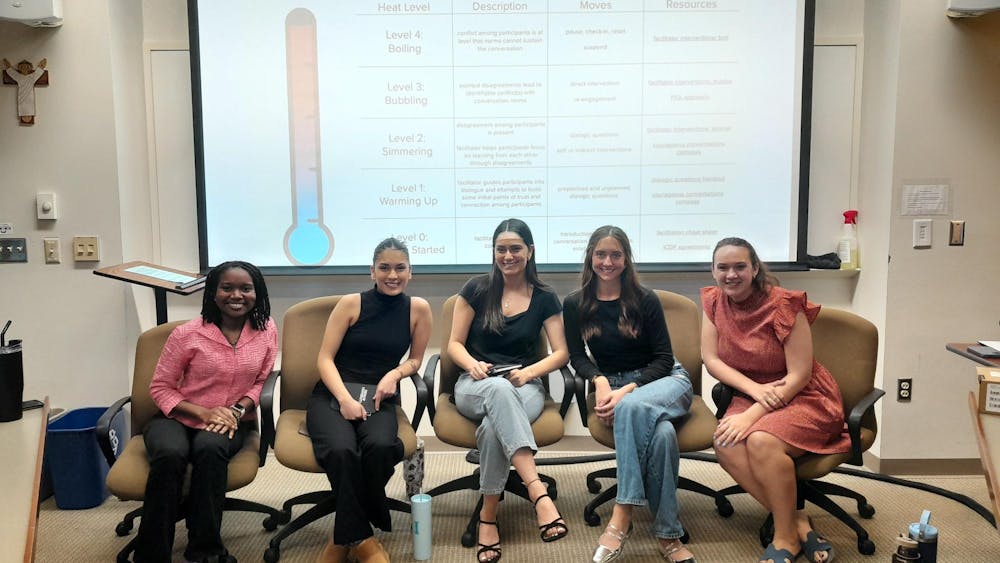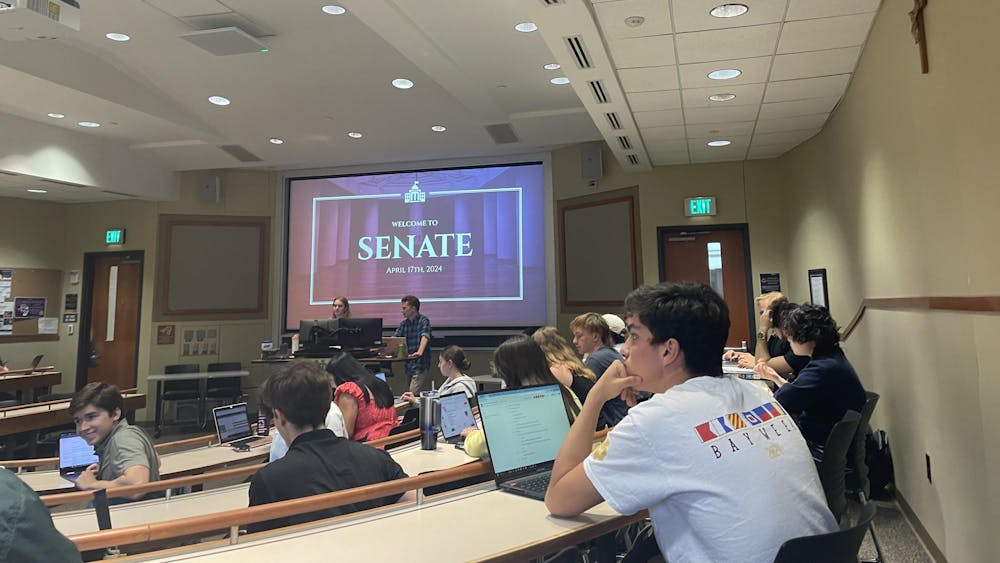A study conducted on boys and girls demonstrated differences in social interactions. When the boys were asked to have conversations with one another, they set their desks so that they didn't have to look at each other. The girls put all the chairs together and invited everyone in.
"I'm talking about whether men and women, maybe pertaining to evolution, use different conversation techniques," professor James J. McKenna said during his lecture on gender differences, held in the LaFortune Ballroom Monday night.

McKenna said there is a sort of human telepathy. Every second of the day, humans work to understand relationships between themselves and others. Citing "Origins of Human Communication," by Michael Tomasello, McKenna said humans are remarkably different from other primates in terms of empathy.
"It's not mind reading, but you can assess the likely intention of someone with who you are watching, talking and interacting with," he said. "Humans can almost become one with another, even if it's not someone you love or feel close to."
When a person first learns to communicate, he said, humans begin with how they feel. If a child is hungry or afraid, it cries, makes faces and grimaces. If that's the beginning of communication then language is centered around emotions, McKenna said.
Five aspects of communication include signals, meaning, function, development and evolution. The nature of the social relationships of the participants is also important, McKenna said. There are friendships, strangers and individuals someone may try to impress. Some situations call for formal or informal communication.
Ultimately, a message is determined by the totality of verbal and non-verbal cues. Message is enhanced by smell and gestures, he said. Men and woman are affected by pheromones, and gestures are a huge part of how they communicate.
"You orchestrate your words," McKenna said. "You're talking, your hands go up and down, this way, is there some functionality to the way you move it?"

When adding the functions of language to society, comprehension of the subject becomes bigger than language itself. It's social linguistics, he said.
"Men seek to separate, distinguish, choose to dominate, display skill," McKenna said. "Women aim to negotiate closeness, give confirmation and support."
Women often believe male silence indicates that they are not opening up about their emotions, he said. Men, however, see their silence as respect and support.
"Women are affirming the validity of their emotion," he said. Mimicking female conversation, McKenna said, "Something happened to me. Oh my gosh, I know what you mean. That same thing happened to me."
Women tend to invite, affirm and make others feel appreciated. This is, he said, marked by head bobbing and vocal sounds of agreement. Women often add "tags" to their sentences. These include: isn't it, do you think and do you agree?
"She knows it, but she doesn't want to come off as too bossy," McKenna said. "That little unsureness softens and allows people to connect, rather than showing distinctive knowledge."
Research shows that, on average, women are more likely than men to phrase a thought as a question, speak at lower volume but a higher pitch, and take less time to express their view, McKenna said. However, how people speak makes a difference in who gets credit for an idea or thought, often to the disadvantage of women.
"This often happens in a professional setting where women may be judged as less intelligent," he said.
Men and women's tend to place different relative weights on status versus connection, which results in asymmetrical roles.
"Conversational modes that distinguish men and women can be viewed as reflecting each of the sexes' emotional needs and tendencies," McKenna said. "However biologically based, they are acted on by early cultural values, examples and experiences, which either inhibit or exaggerate those tendencies."












